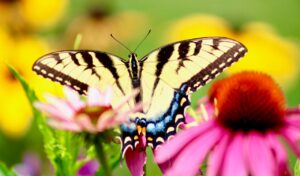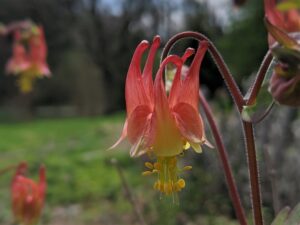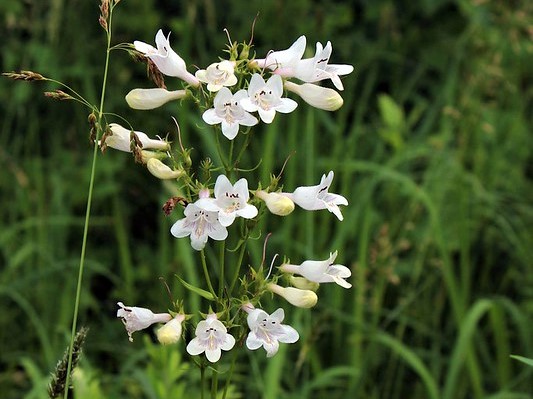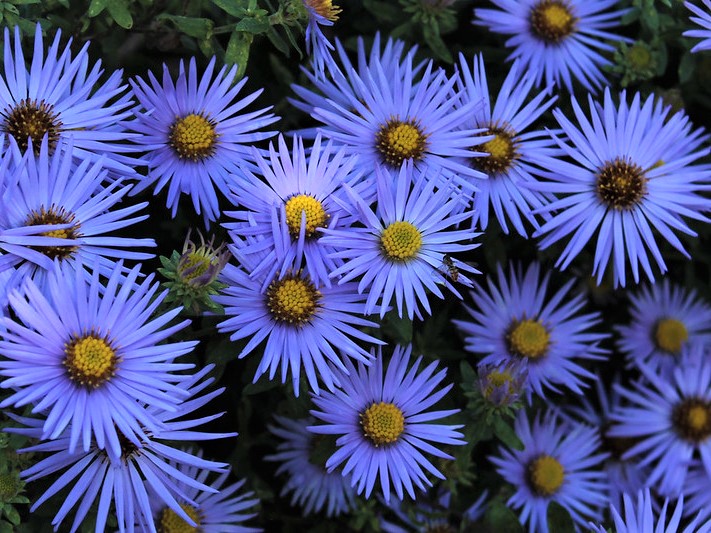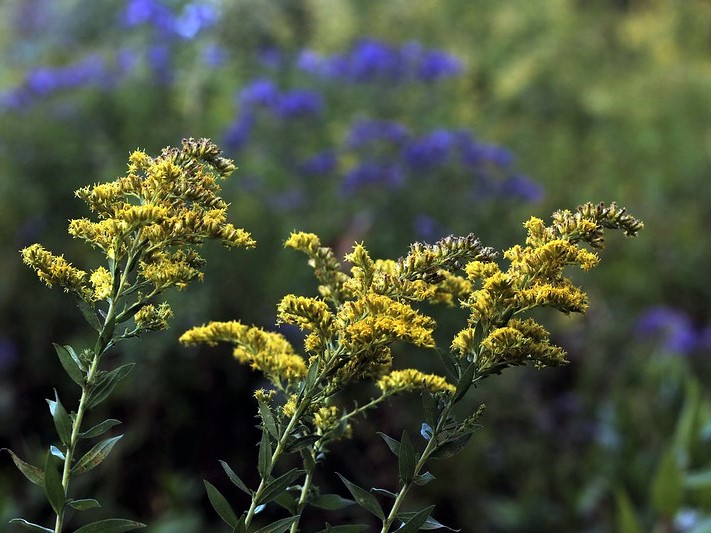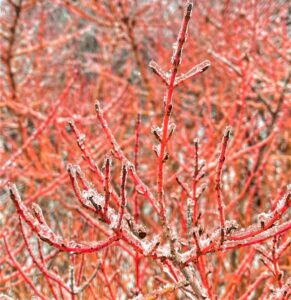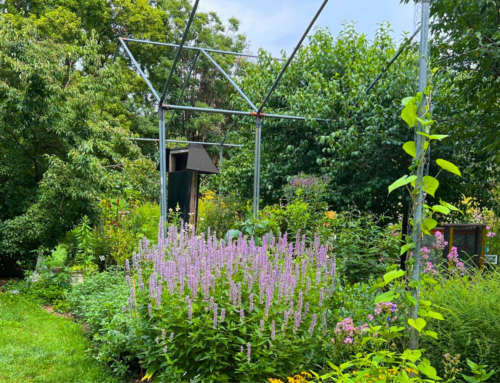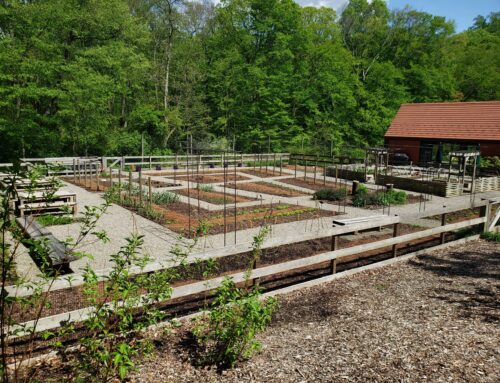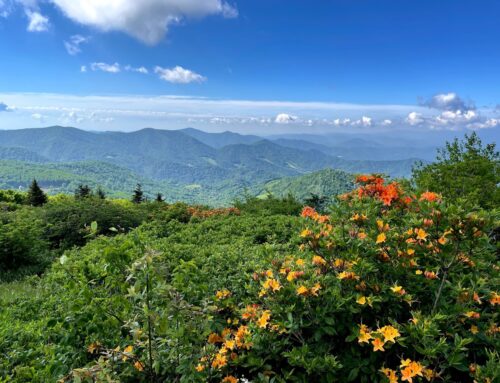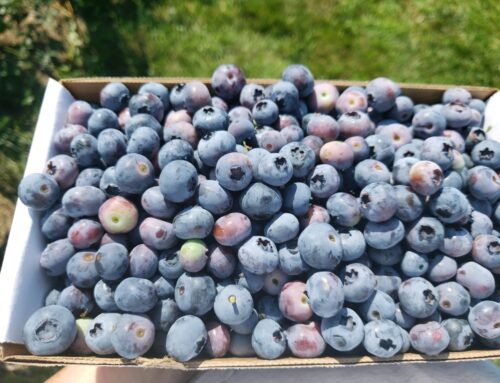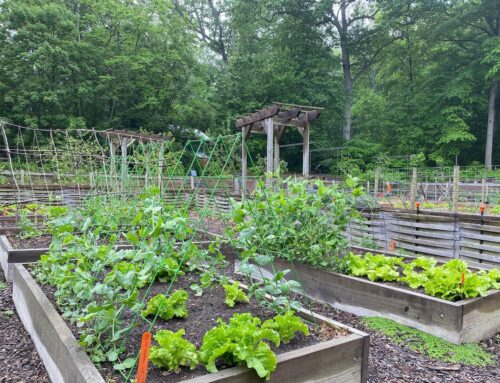Our gardens are an oasis, a place for people to gather, relax, and connect with the natural world. They are also a haven for our pollinator friends, providing a safe place to find food, shelter, and sustenance for the next generation.
As habitat for pollinators is reduced worldwide, our gardens will be more and more critical to their survival – a patchwork of microhabitats across the country where bees, butterflies, and hummingbirds can find refuge.
How can we be sure our gardens will be a paradise for us AND our pollinator neighbors? With plants (of course)!
Tyler Arboretum takes planting for pollinators seriously, and we love to share that with you. Here’s how to shop the 2022 Tyler Plant Sale to get the best pollinator plants for your garden:
- We’ve marked our pollinator-friendly plants with a butterfly icon! While shopping, this symbol will help you know if the plant you’re considering is of special interest to bees, butterflies, and hummingbirds.
- We’ve also sorted the list of plants to identify the pollinator plants quickly! You can find that list here: Pollinator Plants. We’ve also provided a downloadable PDF – Pollinator Plant Wishlist to help you organize your thoughts. You can create a shopping list that incorporates our pollinator friends while growing year-round interest in your garden.
But what if I’m a beginner gardener and just getting started? We get it. Here at Tyler, we’re plant people – and insect people! But getting started can be overwhelming. For us, it’s important that everyone feels like they can create and maintain a successful pollinator garden, whether it’s a five-acre meadow or potted plants on a garden patio.
That’s why this year, we’re offering specially curated pollinator plant packs called Nick’s Picks. Nick’s Picks are Tyler-tested and Tyler and Nick-approved plants to help you get started. Come by the Nick’s Picks table at the Plant Sale and choose four plants to take home in your four-pack. Staff and volunteers from our Pollinator Preserve [insert link] will be there to help you make sure you’re getting the perfect plants for your specific garden conditions.
We’ve also put together a few simple steps to help you plan ahead. We follow a few easy guidelines in our Pollinator Preserve to ensure we provide everything the wildlife needs. And the best part is – providing for pollinators also helps us provide for good garden design as well! Talk about a win-win. Take a look at these simple steps and plant suggestions.
Step One: Plant for Multiple Seasons of Flowers
Bees, butterflies, and hummingbirds are looking for nectar throughout the growing season, so it’s important to make sure you have a good mix of early to late-blooming plants so they can always find something to sip on. Bonus for the gardener — having something in bloom throughout the season helps keep our gardens looking beautiful year-round.
Here are some plants in bloom to help you get started:
Spring Blooms
American columbine (Aquilegia canadensis)
This beautiful, native spring-blooming wildflower is a beacon for butterflies, hummingbirds and long-tongued bees. The red and yellow bell-shaped flowers are one of the first nectar sources in the spring. And the delicate foliage and showy blossoms are a welcome sign for gardeners that spring is underway! A hardy and versatile plant, American columbine can be grown in full sun to shade and tolerate a wide range of soil conditions as long as the site is well-drained. Take a look at our Pollinator Planting PDF to see how American columbine fits the bill for an effective pollinator garden design.
American columbine will be available in both the curated Nick’s Picks Pack and the Perennial Section of the Tyler Plant Sale.
Golden Alexander (Zizia aurea)
This native perennial blooms in late spring with beautiful clusters of golden yellow flowers. This highly adaptable plant will tolerate heavy clay soil and does well in moist to dry conditions. It’s even deer resistant! Golden Alexander is also the host plant for the black swallowtail butterfly. They are growing in giant drifts by Gate 4 at Tyler.
Golden Alexander will be available in the Perennial Section of the Tyler Plant Sale.
Summer Blooms
Beard-tongue (Penstemon digitalis)
This clump-forming native perennial blooms in early summer and is one of the few beard-tongues that thrive in heavy clay soil. It’s deer resistant, and the tubular soft pink flowers attract native long-tongued bees and hummingbirds. Talk about a win! The tidy basal leaves remain in the garden as a beautiful ground cover, even after the summer flowers have faded.
Beard-tongue will be available in both the curated Nick’s Picks Pack and the Perennial Section of the Tyler Plant Sale.
Mountain mint (Pycnanthemum muticum)
Trust us – you don’t want to skip this plant! A pollinator magnet, mountain mint blooms in summer with clusters of silvery-pink flowers that attract bees and butterflies. This hardy and tough native tolerates drought and is deer resistant. Plus, as a mint, the foliage is aromatic and can be used to make herbal mint tea. The flavor is similar to spearmint, and we also suggest using the tough stems as a spear for watermelon and other summer fruits. Talk about a refreshing treat!
Mountain Mint will be available in both the curated Nick’s Picks Pack and in the Perennial Section of the Tyler Plant Sale.
Fall Blooms
Aster ‘Raydon’s Favorite’ (Aster oblongifolius)
This spectacular compact aster blooms in the fall with a profusion of deep periwinkle flowers that will light up your garden in October. A hardy and reliable native, this aster is deer resistant and was named the 2016 Plant of the Year by The Garden Club of America. It serves as an essential late-season nectar source for bees and butterflies and looks spectacular when paired with the golden fall foliage of blue star (Amsonia hubrichtii).
Aster ‘Raydon’s Favorite’ will be available in the curated Nick’s Pick’s Pack.
Wrinkle-leaved goldenrod ‘Fireworks’ (Solidago rugosa ‘Fireworks’)
This clump-forming goldenrod is a compact version of the tall meadow goldenrod. In autumn, it bursts in flower with a dramatic spray of golden starry blossoms that provide an essential late-season nectar source for bees and butterflies. This tough, hardy native thrives in a wide range of conditions and is spectacular when paired with other fall-blooming perennials like aster or coneflower. Bonus — the diminutive seeds will attract birds, including indigo bunting and goldfinch.
Wrinkle-leaved goldenrod ‘Fireworks’ will be available in the Perennial Section of the Tyler Plant Sale.
Step Two: Plant the Rainbow (in size, shape, and color)
Did you know that different pollinators prefer different colors? The relationship between flower color and pollinator preference isn’t entirely understood – and is undoubtedly more complicated than a simple “this pollinator prefers this color” would suggest. But a good rule of thumb is that a colorful garden will attract a greater variety of insects and birds than a monotone one. Some data suggest that bees like bright blues and violets, hummingbirds enjoy deep pinks and reds, while butterflies love a good rainbow of yellow, orange, pink and red. So it’s certainly worth including flowers from across the spectrum, depending on the pollinator you’re hoping to attract. However, a good versatile plant like mountain mint will certainly support all of the above.
Another important consideration is flower shape, and we know more about the science behind this relationship. Tubular flowers, like those of bee-balm (Monarda sp.) and cardinal flower (Lobelia cardinalis), are perfect for hummingbirds, whose long tongues can access the nectar deep inside the flower. On the other hand, flowers that blossom in a flat-topped or ‘umbel’ shape attract a wide range of bees, butterflies, and beneficial flies, which take advantage of the large landing pad these plants provide.
It’s also a good idea to include plants of different heights. Having a nice balance of tall, short and mid-range plants will increase the size of your garden for your pollinator visitors, who think in terms of aerial space.
Bonus for the gardener – including different sizes, shapes and colors will help your garden look its best from every angle. The human eye appreciates the variety just as much as our pollinator friends do!
Step Three: Cut the cutback
Our pollinator friends need shelter throughout the winter, just like we do! Native pollinators in our area spend the cold months tucked into dried perennial stems, buried beneath the soil, or sheltered in a layer of dried leaves. So this year, consider leaving this important protective layer in place when temperatures drop in the autumn.
If you don’t love the look of last year’s perennials in the garden, a good place to get started is to leave just a few plants standing that will remain fairly upright and tidy through the wind and snow of winter. Bonus — besides providing bees, butterflies and birds with shelter, these plants will also break up the landscape and give you something to admire during the winter months.
Here are just a few perennials and shrubs that keep their shape and look beautiful even on the coldest days:
Moss phlox ‘Emerald Blue’ (Phlox subulata ‘Emerald Blue’)
This beautiful low-growing moss phlox is evergreen in our area, providing the perfect ground cover year-round. Come spring, this plant bursts into bloom with a vivid carpet of blue blossoms that attract butterflies, moths, hummingbirds, and bees. A hardy native plant, moss phlox thrives in poor, dry, or rocky soil, making this a great plant to add to stabilize a retaining wall or along a driveway or sidewalk.
Moss phlox will be available in both the curated Nick’s Picks Pack and the Perennial Section of the Tyler Plant Sale.
Redosier dogwood ‘Arctic Fire’ (Cornus sericia ‘Arctic Fire’)
Get ready for vivid color! In addition to attracting birds and butterflies with their flowers and fruit, this shrub steals the show in the winter garden. Its vivid red stems light up gray winter days, especially when silhouetted against a backdrop of new snow. A hardy native plant, redosier dogwood tolerates deer, clay soil, and erosion.
Redosier dogwood will be available in the Tree/Shrub Section of the Tyler Plant Sale.
Hybrid Stonecrop ‘Autumn Joy’ (Sedum x ‘Autumn Joy)
Talk about versatility! This beautiful perennial thrives in many garden settings and can tolerate drought and poor, rocky soil without missing a beat. Hybrid stonecrop ‘Autumn Joy’ blooms in late summer, and the flower persists on the plant into the winter, beginning as a pale pink and slowly shading to deep mahogany. The sturdy, upright stems keep this plant tidy and compact through the winter months, offering shelter to birds and pollinators alike. Bonus — these plants thrive in containers, so if you want to create a pollinator garden on a patio or deck, this is a great plant to consider!
Hybrid stonecrop ‘Autumn Joy’ will be available in the Perennial Section of the Tyler Plant Sale.
With these few simple steps – and with the right plants – your garden can be a haven for people and pollinators alike. So check out our downloadable plant list:, keep an eye out for the pollinator icon at our plant sale, and check out our curated Nick’s Picks Pollinator Packs to get your garden set up for success!


